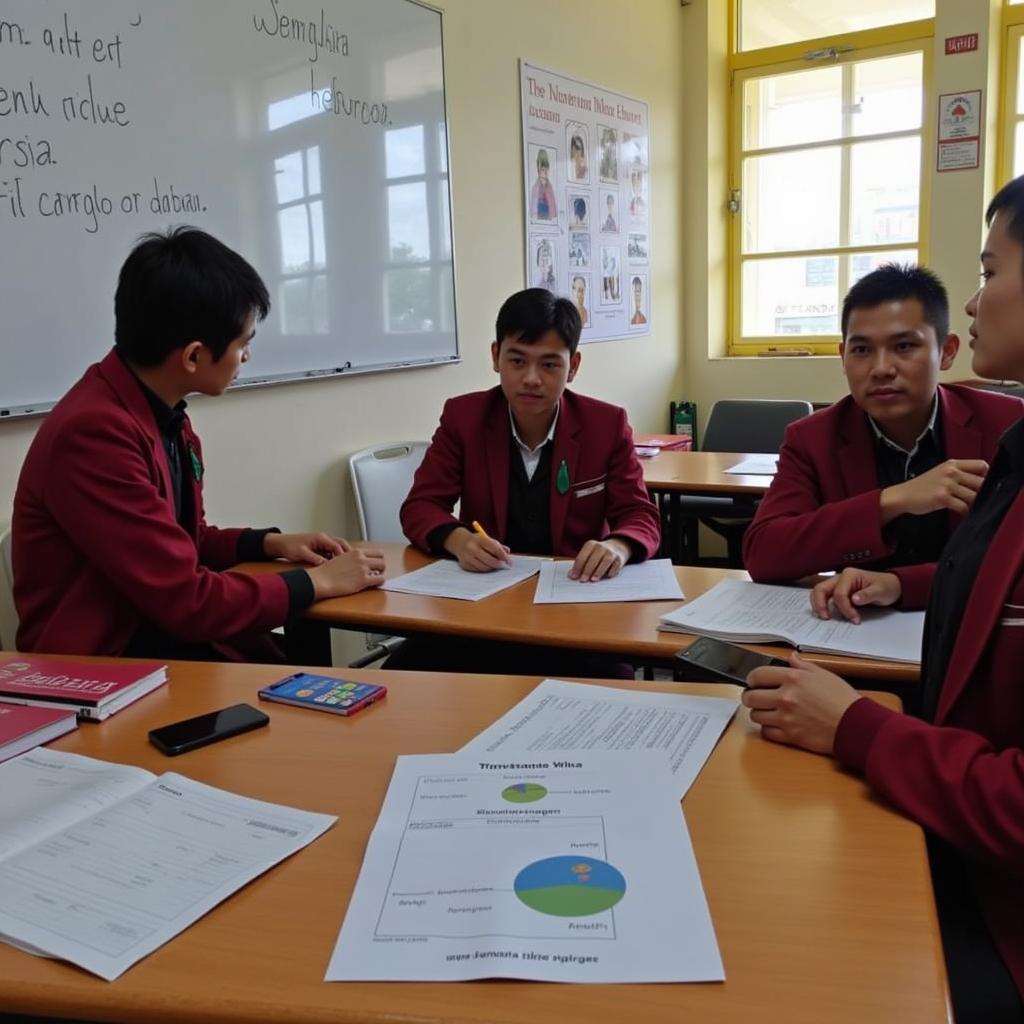ASEAN, the Association of Southeast Asian Nations, is a dynamic and complex region with immense potential for growth and development. Understanding the intricate dynamics of this region, its unique cultural tapestry, and its evolving political landscape is crucial for businesses, investors, and anyone interested in the future of Southeast Asia. This article delves into the multifaceted aspects of ASEAN analysis, exploring key factors that contribute to its rise as a global economic powerhouse and navigating the challenges that lie ahead.
Exploring the Pillars of ASEAN Analysis
ASEAN analysis encompasses a broad range of interconnected factors that shape the region’s present and future. These include:
1. Economic Growth and Integration:
ASEAN has experienced remarkable economic growth in recent decades. This growth is driven by a combination of factors, including:
- A growing middle class: The rapid expansion of the middle class in Southeast Asia has created significant consumer demand across a range of industries.
- Favorable demographics: ASEAN boasts a young and growing population, which offers a strong workforce and a burgeoning consumer market.
- Regional integration: Efforts to foster regional integration, including the ASEAN Economic Community (AEC), have facilitated trade and investment flows within the region.
- Free trade agreements: ASEAN has negotiated numerous free trade agreements with other countries and regions, opening up new markets and attracting foreign investment.
2. Political Stability and Cooperation:
Despite diverse political systems and historical backgrounds, ASEAN members have successfully maintained political stability and fostered regional cooperation. This stability is crucial for attracting investment, promoting trade, and ensuring regional security.
- ASEAN Way: The “ASEAN Way” emphasizes consensus-building, non-interference in internal affairs, and peaceful resolution of disputes.
- Regional security cooperation: ASEAN has established various mechanisms for regional security cooperation, including the ASEAN Regional Forum (ARF).
- Multilateralism: ASEAN engages in multilateral diplomacy, promoting regional stability and fostering dialogue on global issues.
3. Cultural Diversity and Social Change:
ASEAN is home to a vibrant tapestry of cultures, languages, and traditions. This diversity is both a strength and a challenge for regional integration.
- Cultural exchange: ASEAN fosters cultural exchange through various programs and initiatives, promoting understanding and appreciation of different cultures.
- Social change: Southeast Asian societies are undergoing rapid social change, driven by urbanization, technological advancements, and evolving values.
- Digital transformation: The digital revolution is transforming Southeast Asia, creating new opportunities and challenges for economic development and social change.
4. Sustainability and Environmental Concerns:
ASEAN faces significant challenges related to sustainability and environmental protection.
- Climate change: Climate change poses a major threat to Southeast Asia, with rising sea levels, extreme weather events, and resource scarcity.
- Environmental degradation: Economic development has come at a cost to the environment, leading to deforestation, pollution, and biodiversity loss.
- Sustainable development: ASEAN is committed to promoting sustainable development through policies and initiatives aimed at protecting the environment and promoting resource efficiency.
The Future of ASEAN: Navigating Challenges and Opportunities
While ASEAN has made significant strides in recent decades, it also faces a number of challenges:
- Internal disparities: Significant economic and social disparities persist within ASEAN, with some countries lagging behind in development.
- Geopolitical tensions: ASEAN is located in a strategically important region, making it subject to geopolitical tensions and competing interests.
- Economic volatility: ASEAN economies are vulnerable to external shocks, such as global economic downturns and commodity price fluctuations.
Despite these challenges, ASEAN is well-positioned for future growth and development:
- Emerging technologies: ASEAN is embracing emerging technologies, including artificial intelligence, blockchain, and e-commerce, to drive innovation and economic growth.
- Growing middle class: The continued expansion of the middle class provides a significant opportunity for businesses and investors.
- Strategic location: ASEAN’s strategic location in the heart of Asia makes it a key player in regional trade and investment.
Conclusion:
ASEAN analysis is a complex and dynamic field that requires a holistic understanding of the region’s diverse aspects. By carefully examining economic, political, social, and environmental factors, we can gain valuable insights into the region’s potential and navigate the challenges that lie ahead. As ASEAN continues to evolve, its future trajectory will depend on its ability to address these challenges while leveraging its unique strengths to achieve lasting peace, prosperity, and sustainable development.
FAQ:
Q: What are some of the key economic indicators that are used to analyze ASEAN?
A: Key economic indicators include GDP growth, inflation, unemployment, trade balance, and foreign direct investment.
Q: How does ASEAN’s political stability impact its economic growth?
A: Political stability is crucial for attracting investment, promoting trade, and ensuring regional security, which ultimately contributes to economic growth.
Q: What are some of the major environmental challenges facing ASEAN?
A: Climate change, deforestation, pollution, and biodiversity loss are among the major environmental challenges facing the region.
Q: What are some of the key opportunities for businesses and investors in ASEAN?
A: Opportunities include a growing middle class, emerging technologies, and a strategic location in the heart of Asia.
Q: What are some of the key initiatives that ASEAN is implementing to promote sustainable development?
A: ASEAN is implementing various initiatives to promote sustainable development, including policies to protect the environment, promote resource efficiency, and combat climate change.

